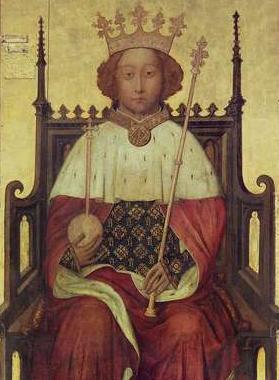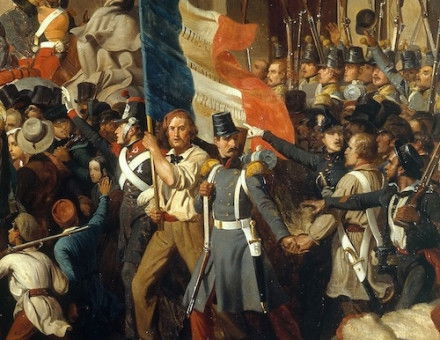A King's Tomb
The Church of King's Langley, Hertfordshire, contains a richly decorated tomb. Was it destined to be Richard II's?
 When Richard II's first consort, Anne of Bohemia, died in June 1394, his grief knew no bounds. He decided that unlike any previous king and queen of England, they should both be buried in the same tomb, and that on it their gilded effigies should lie (in the words of the contract with the coppersmiths) "crowned, side by side and clasping their right hands and holding sceptres in their left hands". The tomb was to be in the Chapel of Edward the Confessor in Westminster Abbey. As the space there was already full room was made by removing a tomb on the south-west, which probably contained the bodies of Hugh and Mary Bohun, children of an Earl of Hereford and grandchildren of Edward I. Into the space thus made the body of Anne was lowered at a funeral of unexampled splendour, when the famous quarrel took place between the King and the Earl of Arundel.
When Richard II's first consort, Anne of Bohemia, died in June 1394, his grief knew no bounds. He decided that unlike any previous king and queen of England, they should both be buried in the same tomb, and that on it their gilded effigies should lie (in the words of the contract with the coppersmiths) "crowned, side by side and clasping their right hands and holding sceptres in their left hands". The tomb was to be in the Chapel of Edward the Confessor in Westminster Abbey. As the space there was already full room was made by removing a tomb on the south-west, which probably contained the bodies of Hugh and Mary Bohun, children of an Earl of Hereford and grandchildren of Edward I. Into the space thus made the body of Anne was lowered at a funeral of unexampled splendour, when the famous quarrel took place between the King and the Earl of Arundel.





